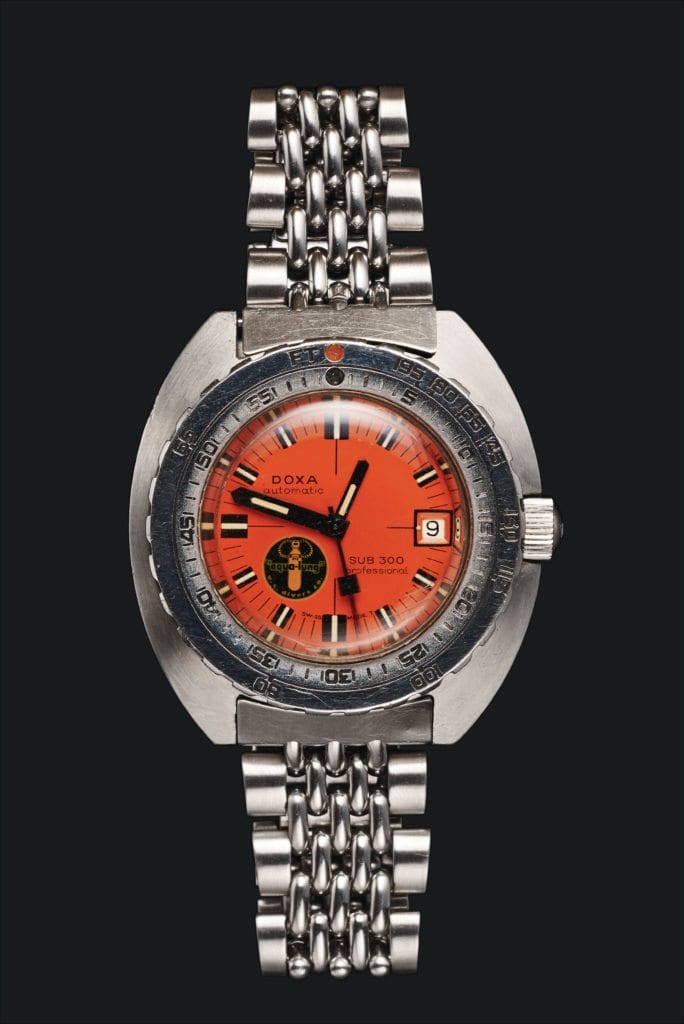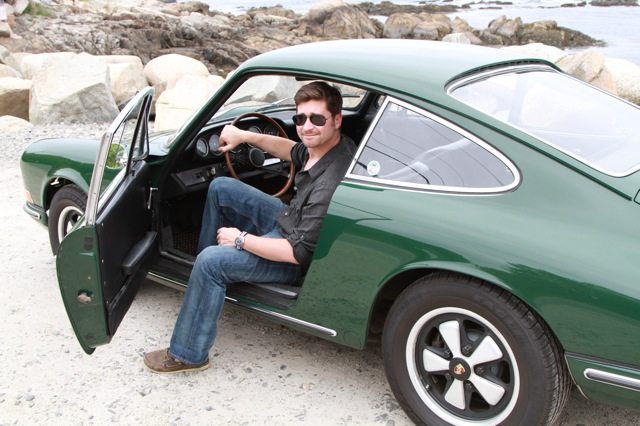James Lamdin is a self-described geek whose love of machines and timepieces led him to start Analog Shift, a curated boutique of incredible vintage watches. He started his career in outdoor apparel and as an automotive journalist, eventually finding himself frustrated with the vintage watch market. So, he left the car world and entered the watch one. Lamdin is a man who appreciates what came before us, and so he was the perfect guy to get involved. Now, you can catch him tooling around Manhattan in his 1967 Porsche, reading a book (only the paper kind, no e-reader), or sipping on a choice pour at a local whiskey bar.
His watch story is much like many others. It’s relationship-driven as he inherited not only his love of watches, but a few timepieces as well, from his grandfather. Its filled with history, nostalgia, and memories. There are storied brands and long searches. This is James Lamdin’s watch story, as told in A Man and His Watch:

Excerpted from A Man and His Watch by Matt Hranek (Artisan Books). Copyright © 2017. Photographs by Stephen Lewis.
Even as a child I knew that somewhere, someday, I was going to appreciate timepieces. It started with my grandfather—not from a single watch that was passed down, but more of an overall appreciation. He wasn’t a wealthy man, but the objects in his life were exclusively of high quality, whether it was clothing and artwork or booze and music. I remember walking into his house as a kid and saying, “What’s this new piece of art about?” and he’d say, “I bought it in 1973 in this little shop in New Zealand—we’d just had these beautiful roast beef sandwiches, and the shop owner’s daughter was really cute, and they had a dog.” I came to associate his possessions with storytelling, and while I didn’t inherit any spectacular watches from him, the interest started there in earnest.
I was more rugged in my youth, and wore a lot of digital watches—Timex Ironmans and Luminox Navy SEALs—because I fancied myself a survivalist and outdoorsman. The first time I ever encountered the name “Doxa” was on the pages of a Clive Cussler adventure novel that I read in elementary school. Cussler became my favorite writer of escapist fiction; his main character, Dirk Pitt, is the quintessential cross between Indiana Jones, James Bond, and Jacques Cousteau. And he wears an orange-faced Doxa diving watch.
After my grandfather passed, I was determined to find “my” watch. And a light went off: I knew about the Doxa, even though I had no idea what it looked like. And at the time, the Internet wasn’t as robust as it is today; there weren’t online communities of watch enthusiasts, and eBay was in its infancy. So I had a lot of work to do, and mostly it was researching with older collectors—people who knew the brand and even Clive Cussler’s personal anecdotes. (He actually got a Doxa watch from a dive shop he was working in when writing his first novel, The Mediterranean Caper, and he simply wrote it into the book.)
As a collector, I’ve always been driven by authentic stories and real history. I appreciate aesthetics and fashion watches to a degree, but I really enjoy watches that were designed for a purpose. Doxa has a rich history with tool watches. They’re a Swiss company, older than Rolex. They had some early success with pocket watches that were extremely accurate, and went on to introduce an eight-day power-reserve dashboard clock for early cars—if you owned the first Mercedes-Benz or Ford and you wanted a clock in it, most likely that would be a Doxa. The company has a history of supplying the military, as well, but by the fifties and sixties, the company wasn’t as relevant.
But sport watches were becoming a thing then, and the director of Doxa at the time was keen on the new sport of scuba diving, so he developed an all-new watch that was functional and practical for divers—looks be damned! While the Doxa Sub 300 wasn’t the world’s first diving watch, it’s arguably the first purpose-built diving watch for both amateur andprofessional divers. Things like bright, high-visibility dials in orange and yellow, the unidirectional rotating bezel, the diver’s extension clasps—Doxa pioneered those.
The road to finding my first Doxa took several years. Ultimately, this watch found me. A guy in California had been given a Doxa Sub 300 “black lung” by his father, who was an underwater cameraman on the James Bond film Thunderball, among others. His father had purchased the watch in 1968 at a dive shop in Florida. Eventually he gave it to his son, who wore it for a short while before putting it in a desk drawer and forgetting about it for thirty years. When he was packing up to move to Arizona, he came across it again. He wanted to find out more about the watch and its origins, so he did some research. He came across my name because I had been quoted several times on the subject of Doxa, and he reached out to me. The few blurry photos he sent me of the watch got me really excited; I encouraged him to send it to me in New York, which he did. I authenticated it, then spoke to him on the phone about what it was worth. And then I waited for him to ask that next question: “Do you want to buy it?”
This happened just as I was starting my company, and while it wasn’t a mind-blowing expenditure, keeping a watch for myself at that stage was a luxury. And a vintage watch is the ultimate luxury—it’s owning something that no one else has, but it’s also being the keeper of its story. It’s a book; there are chapters. And then you have that object and you write your own chapters into it. Doxas aren’t impossibly rare watches to find, but they’re certainly not everywhere. I’ve never been the guy who buys a watch to start a fresh book, to start something new. I’d rather write my chapter into something that’s ongoing. Perhaps forever.
I’m crazy about these Doxas, and I wear mine all the time. I guess I’ve become somewhat known for Doxas. I don’t want to own them all; I just really love them and want them to be saved.
Get More Articles Like This in Your Inbox
We're constantly creating great content like this. So, why not get it delivered directly to your inbox? By subscribing you agree to our Privacy Policy but you can unsubscribe at any time.






